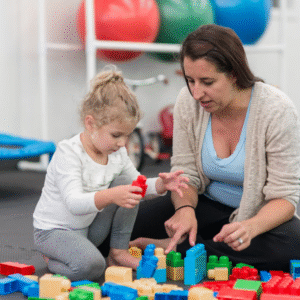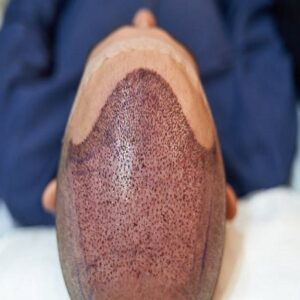Ice bath therapy, also known as cold water immersion, has gained significant popularity in recent years among athletes, wellness enthusiasts, and individuals seeking holistic recovery methods. From professional sports teams to fitness influencers, people are discovering the potential benefits of plunging into cold water. While the idea of submerging yourself in icy water may sound intimidating, with the right guidance and precautions, ice bath therapy can be both safe and highly effective. This beginner’s guide will help you understand the basics of ice baths, their benefits, and how to incorporate them into your wellness routine.
What is Ice Bath Therapy?
Ice bath therapy involves immersing the body, typically up to the waist or shoulders, in cold water, usually ranging from 50°F to 59°F (10°C to 15°C). This therapy is often used post-exercise to reduce muscle soreness and inflammation, promote faster recovery, and enhance overall mental resilience. For beginners, ice bath tubs are an ideal starting point as they are designed to comfortably accommodate the body while maintaining consistent water temperatures.
Modern ice bath tubs are not only practical but also convenient. They often come with features such as adjustable temperature controls, insulated walls to maintain cold water for longer periods, and ergonomic designs for comfort. For anyone new to cold water immersion, investing in a quality ice bath tub can make the experience far more manageable and enjoyable.
Key Benefits of Ice Bath Therapy
- Reduces Muscle Soreness and Inflammation
After intense exercise, microscopic damage occurs in muscle fibers, causing inflammation and delayed onset muscle soreness (DOMS). Cold water immersion helps constrict blood vessels, reduce swelling, and flush out metabolic waste, thereby easing soreness and accelerating recovery. Studies suggest that athletes who incorporate ice baths regularly often report reduced muscle fatigue and improved performance during consecutive training sessions. - Enhances Recovery and Circulation
The cooling effect of an ice bath stimulates vasoconstriction (narrowing of blood vessels) followed by vasodilation (expansion of blood vessels) once you exit the cold water. This “pumping” action helps improve circulation, delivering nutrients and oxygen to fatigued muscles more efficiently, which supports faster tissue repair and recovery. - Boosts Mental Resilience
Ice baths are not only physical but also mental training. Enduring the initial shock of cold water challenges your body’s stress response, teaching resilience and improving mental toughness. Over time, regular exposure to cold water can help individuals manage stress better, increase focus, and even improve mood by triggering the release of endorphins. - Supports Immune Function
Some research indicates that cold water immersion may enhance the immune system. Exposure to cold water can stimulate the production of white blood cells, which help defend the body against infections. While this is not a substitute for healthy habits like proper nutrition and sleep, it may complement an overall wellness routine.
How to Start Ice Bath Therapy Safely
For beginners, it’s crucial to approach ice bath therapy gradually and mindfully. Here’s a step-by-step guide to ensure safety and effectiveness:
- Choose the Right Ice Bath Tub
Invest in a quality ice bath tub that allows you to maintain a consistent water temperature. Look for tubs with ergonomic designs, good insulation, and easy drainage. Many beginner-friendly options are compact enough to fit at home while providing full-body immersion. - Prepare the Water
Fill the tub with cold water and add ice gradually. Beginners can start with water temperatures around 60°F (15°C) and slowly work down to colder temperatures as tolerance increases. A thermometer is useful to monitor temperature consistently. - Time Your Sessions
Start with short immersion periods of 3–5 minutes. Over time, you can gradually increase sessions to 10–15 minutes. Avoid exceeding 15–20 minutes, as prolonged exposure to cold water can lead to hypothermia or numbness. - Dress Appropriately
Wear minimal clothing, such as a swimsuit or shorts, to maximize contact with cold water. Some individuals prefer to wear gloves or socks for extra comfort, but avoid heavy clothing that traps heat and reduces the cooling effect. - Enter Gradually
Step into the tub slowly to allow your body to acclimate to the temperature. Take deep breaths to control the initial shock. Avoid sudden movements, as they can trigger rapid heart rate changes. - Post-Bath Care
After an ice bath, gently towel dry and warm up with a warm drink or layered clothing. Avoid hot showers immediately, as sudden temperature shifts can cause dizziness. Gentle stretching and hydration are also beneficial.
Tips for Making Ice Baths More Comfortable
- Focus on Breathing: Slow, controlled breathing helps manage the initial shock and reduces stress on the body.
- Use Music or Mindfulness Techniques: Listening to calming music or practicing meditation can distract from the cold and enhance mental resilience.
- Consistency is Key: Like any wellness practice, the benefits of ice baths are maximized with regular sessions rather than sporadic use.
Who Should Avoid Ice Baths?
While ice bath therapy offers numerous benefits, it’s not suitable for everyone. Individuals with cardiovascular conditions, respiratory issues, or sensitivity to extreme cold should consult a healthcare professional before starting. Pregnant individuals and people with certain neuropathies should also exercise caution.
Conclusion
Ice bath therapy is a powerful tool for enhancing recovery, reducing inflammation, and improving mental resilience. By using a proper ice bath tub, following safe immersion guidelines, and gradually building tolerance, beginners can safely experience the physical and mental benefits of cold water immersion. With patience and consistency, ice baths can become a cornerstone of your wellness and recovery routine, helping you perform better, recover faster, and cultivate resilience both in body and mind.





